Today I bring you a little about another animal of the fabulous marine kingdom, mollusks belong to the oldest animals on the planet, due to the variety and forms are objects of studies around the world, today is the turn of the snail language of flamenco I found the name curious because it is related to the name of my account, as you know I love these birds, so let's see what similarities there are between the bird and Flamingo tongue snail. Come with me to discover some of its characteristics.

This snail is distinguished from the rest by having a powerful and striking orange and yellow, with a variety of white spots with black edges. If its scientific name is Cyphoma gibbosum, it is an ovulid mollusk and its main habitat is the imposing Atlantic Ocean, especially in the waters of the Caribbean Sea where it lives warmly.
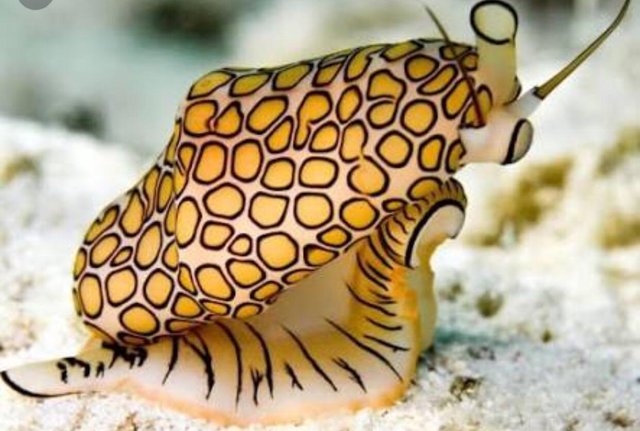
Its beautiful shell can have a dimension of 25 to 35 mm in length at least and a maximum length of 44 mm due to its diet this snail does not grow much, so we will always find some large mollusks and others of a reduced size being the diet a determining factor in the appearance and size that develop in an adult stage.
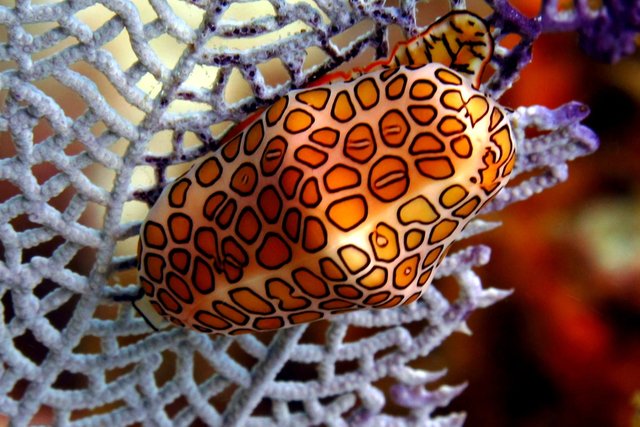
It feeds especially on gorgonian which are a very nice species of coral, by the way, I must make some publications about these living beings, either continuing with Flamingo tongue snail, said that it feeds especially on gorgonian and other kinds of corals common in the Caribbean Sea.
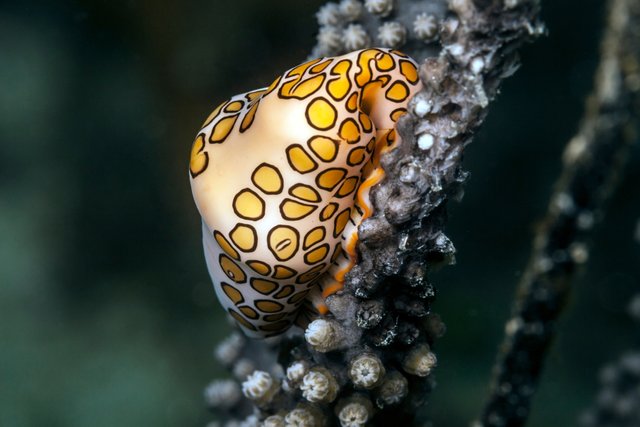
The reproduction of the Flamingo tongue snail happens in the rainy season, the female is able to lay several dozen eggs in strategic parts of the corals, the same that devours, but without causing more damage, the eggs take a week and a half to hatch, the larvae that in their stage number 1 of life are plankton type so they will remain deposited in the bottom of the corals until they begin to develop their shell.
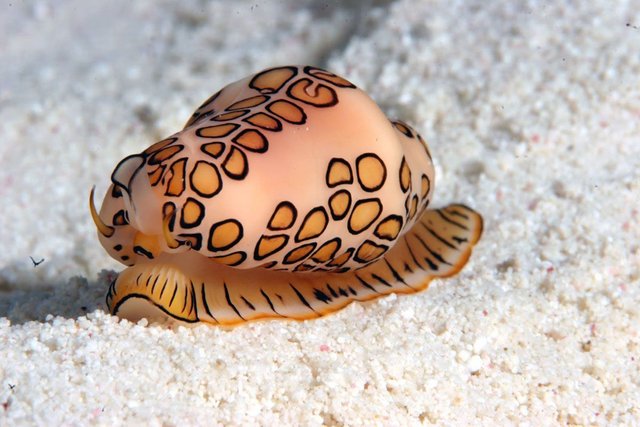
These snails can be found in shallow water, you can see them on the shore of the beach or up to a maximum of 29 meters deep, the depth that allows there are coral organisms, in their adult stage are eating passively in the corals while the younger will continue in the lower parts of the corals.
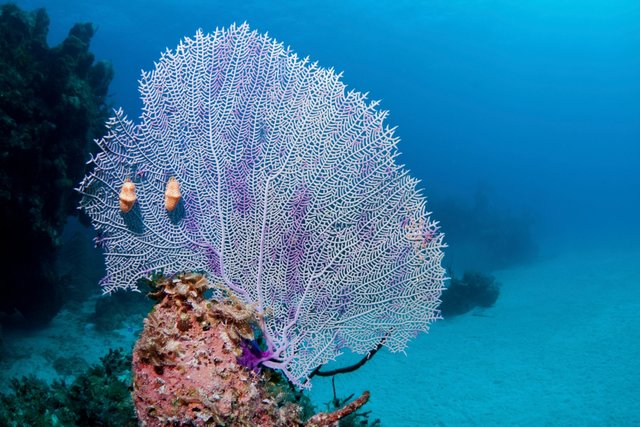
There is one thing that is not clear to me yet, it is because the name of Flamingo tongue snail, may resemble the tongue of a flamingo, anyway, I find a snail too beautiful not to report on its existence.
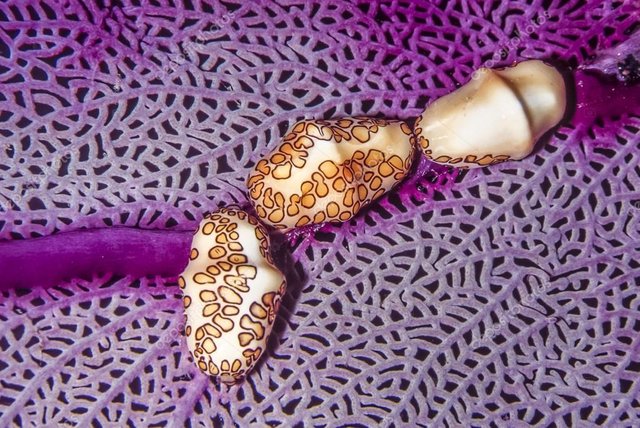
Unfortunately this snail is about to disappear, as well as the corals, the trawl fishing worldwide has destroyed most of the coral ecosystems where live a variety of mollusks and fish amazing, almost all these fish, and corals also catch them to be sold on the black market as pet trafficking, its beauty is enough to awaken the morbid money of many divers who with the capture of the Flamingo tongue snail have incredibly decreased their population.
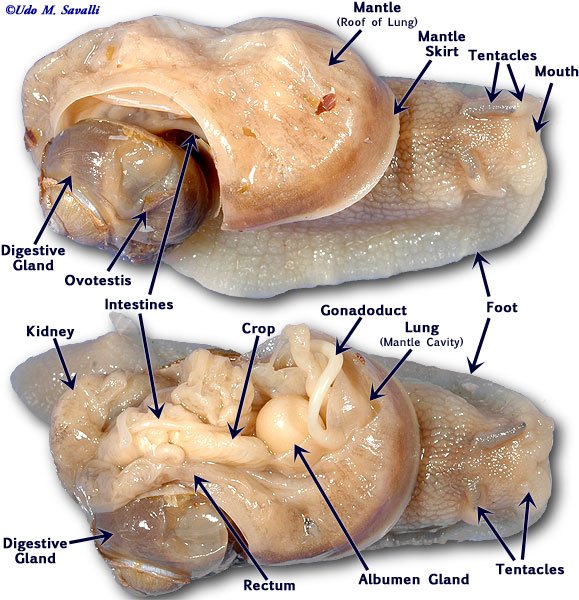
Fortunately, there are privileged areas, special areas where fishing is not practiced, sites for the exclusive study of corals and the biodiversity they live, thanks to these scientific initiatives it is likely that we can continue to see alive our friend the Flamingo tongue snail.
Thank you for reading


If you liked reading this article, feel free to FOLLOW ME, UPVOTE and RESTEEM! It's always appreciated =D. Thank you all for your support and see you soon for the news flamingirl's adventures!


this is absolutely stunning, thanks for sharing this! I just resteem it
Downvoting a post can decrease pending rewards and make it less visible. Common reasons:
Submit
Very retro looking
Posted using Partiko iOS
Downvoting a post can decrease pending rewards and make it less visible. Common reasons:
Submit
Amazing :)
Posted using Partiko Android
Downvoting a post can decrease pending rewards and make it less visible. Common reasons:
Submit